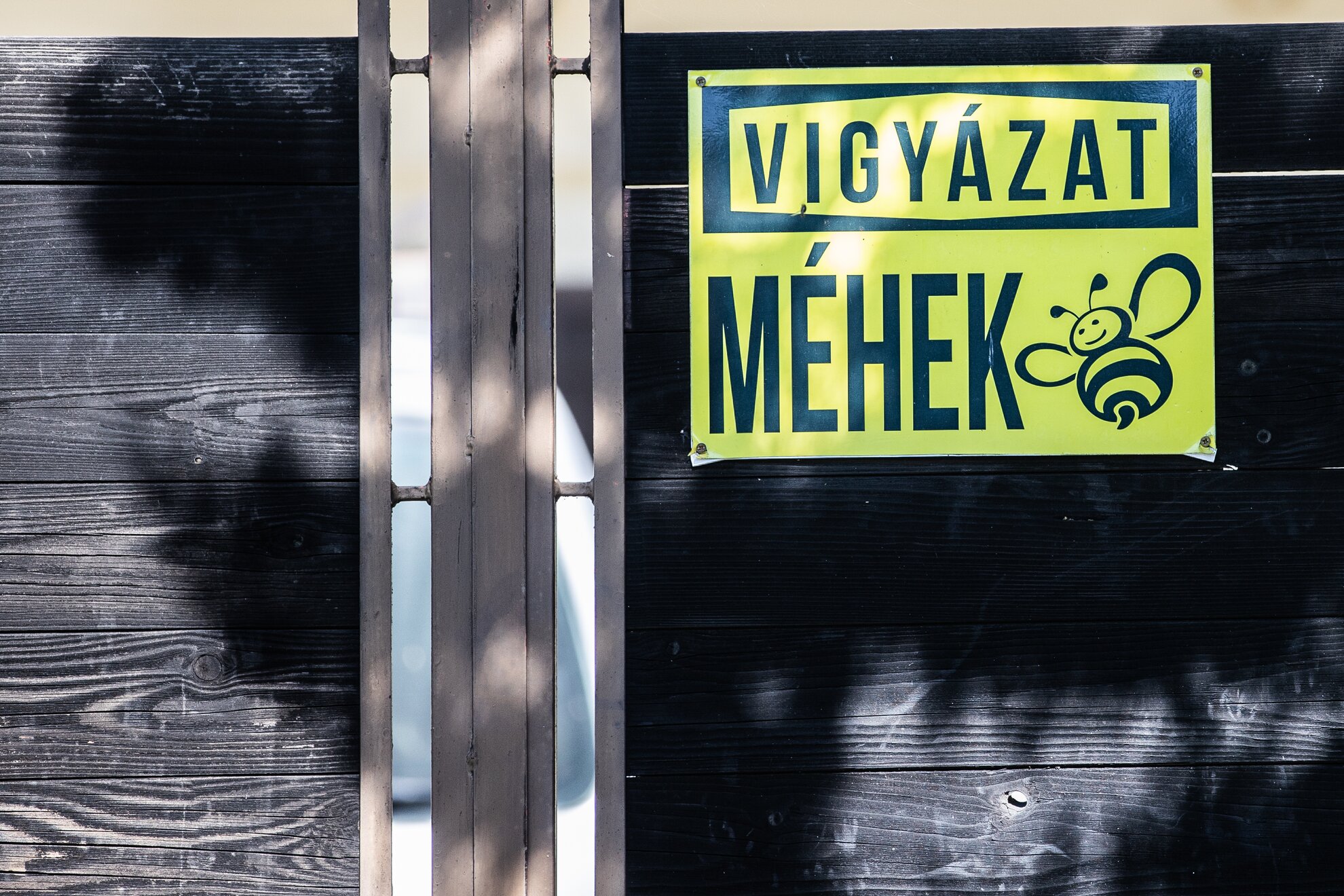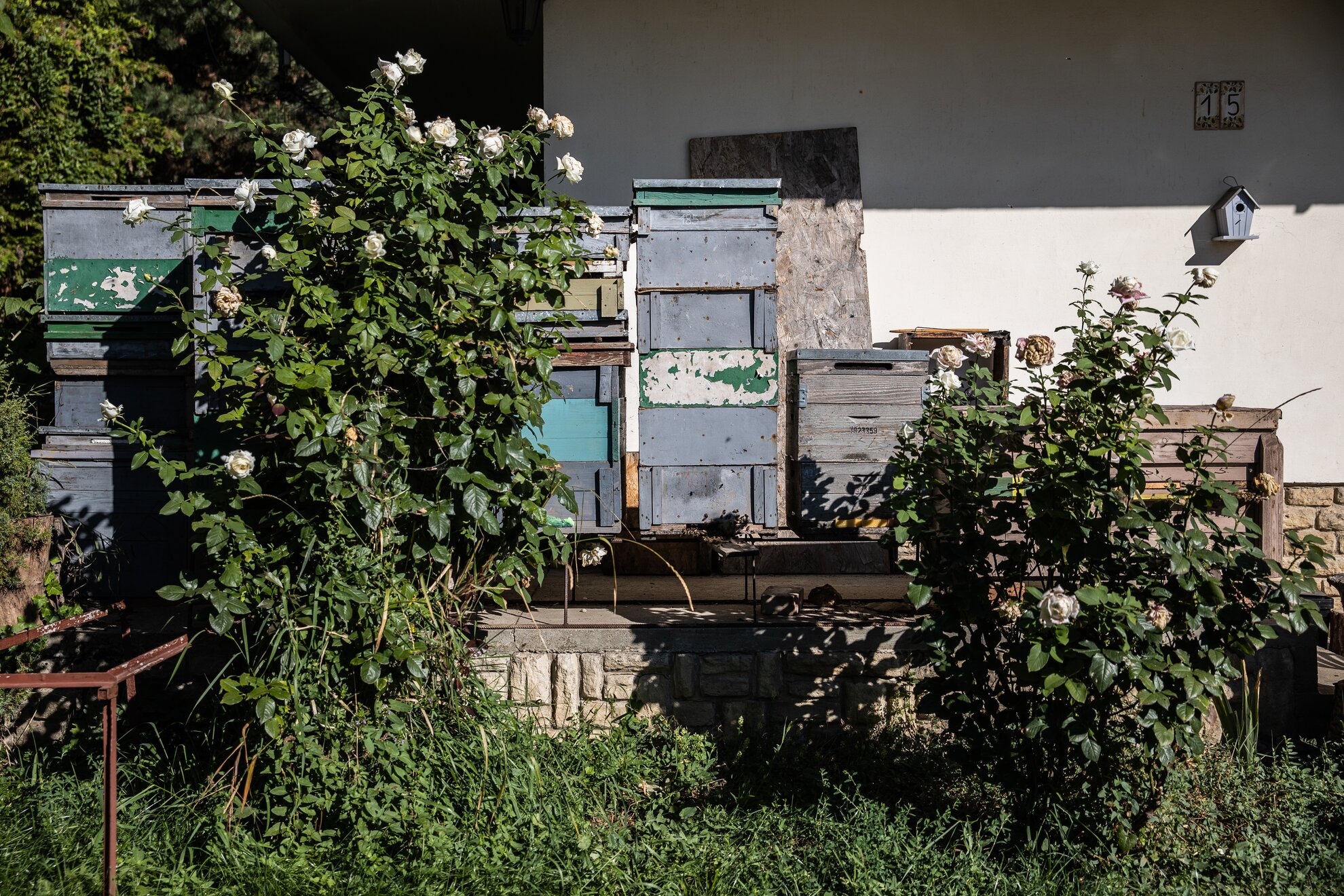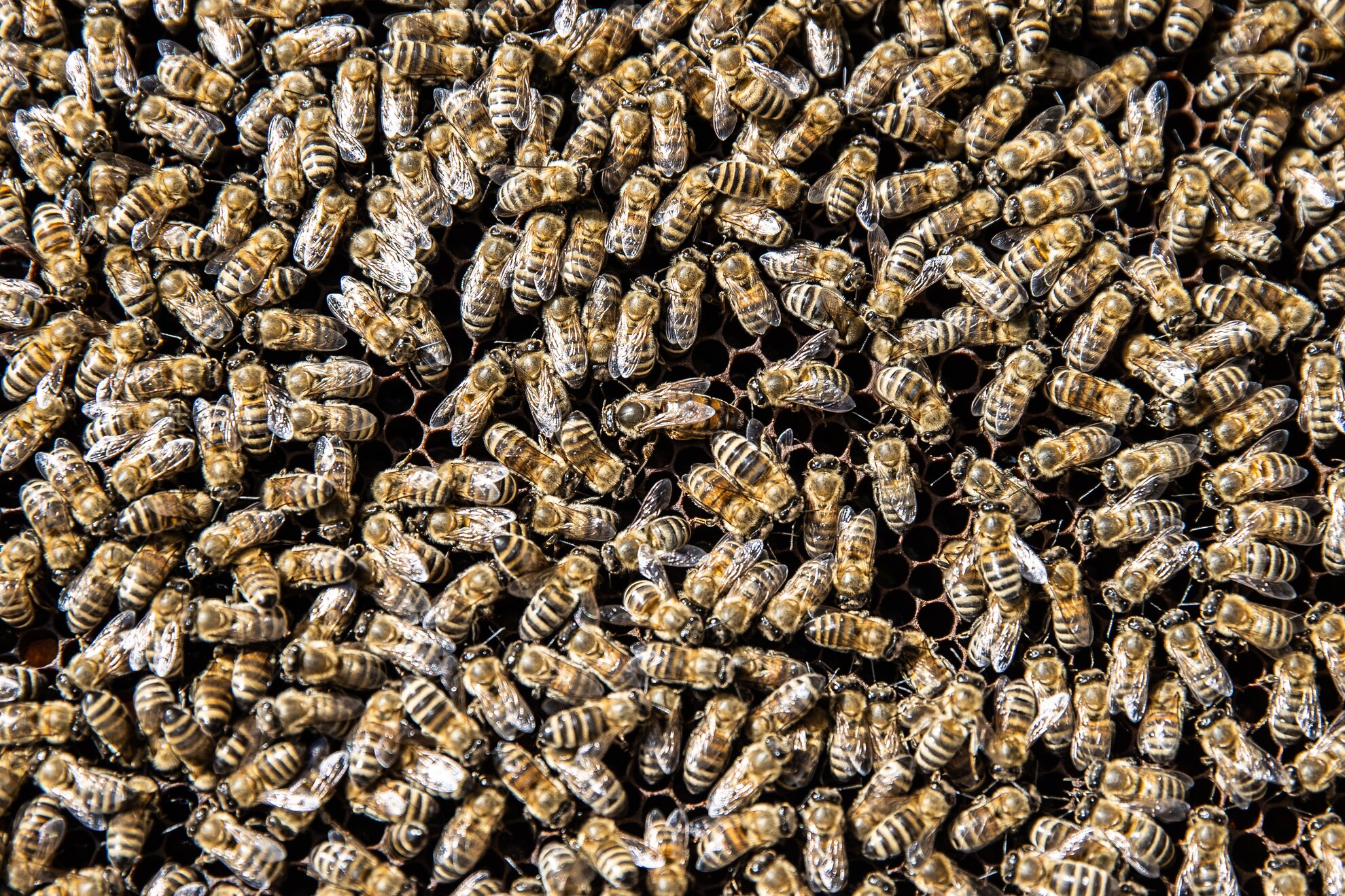Zalán Borbás, the specialist who works behind a gate marked ‘Beware! Bees!’, got to know this line of work in Transdanubia. After completing a one-year course at Szent István University, he started working in Jászság.

In 2015, partly due to the poorly controlled insecticides, he decided to relocate to Budapest. This is how this complex of hives were set up on Széchenyi Hill, next to a huge walnut tree, where his hard-working friends buzz among the roses looking for a top-up. Perhaps it’s unusual that the balcony of the family house actually hangs over the bees’ residence, even if the patio door is covered with insect netting.

According to Zalán, however, relatively few people live in the immediate vicinity of the nature reserve and, on the other, due to the steep incline, by the time the bees reach the street, they will have been flying higher than passers-by anyway.

In these ideal conditions, Zalán has his work cut out, raising and reproducing queens on the basis of their own positive character, which determines the assets of the whole family. When the queen bee flies out of the hive, she mates with six to eight males, who are released from their labour before being torn apart by workers.

According to many professionals, the more aggressive workers are with other species, the more honey they make. Zalán has no such experience, as during breeding, he tries to create queens and families in which the strong tendency to clean and collect is coupled with gentleness.

The character of the bees can be deduced from the cubital index, the relative lengths of certain sections in bee wings. Thus, bees could be perfect urban neighbours if we followed certain rules and treated them with respect. At the same time, although the bees buzzing around this farm seemed gentle, no-one should open their hive or poke them.
Tribal dance
The average lifespan of a bee is 30-40 days, with the exception of certain individuals born towards the end of summer who survive the winter. In the morning, the oldest workers wake up very early and fly off to collect samples. Returning home with the trial nectar, they dance to show the family where they found the most food. Comparing the distance to the quality of the nectar, the group makes a decision on where to go to collect that day. Often, families living close to each other head in completely different directions.

Honey certainly
contains healthy, valuable trace elements and has excellent physiological
effects. Yet many are wary of honey produced in cities because of air pollution.
Mixed-flower honey from plants in small gardens and
meadows around the city has a good chance of containing far fewer chemicals
than from bees in huge monocultures.
In addition, one of the problems of
beekeepers has been solved by the successive flowering in garden, allowing bees
to collect from the same field throughout the season. Honey prepared like this will
automatically become the mixed-flower variety.

Zalán currently oversees 22 bee colonies. He used to work twice as much, but he’s using more technology to take care of fewer bees. The area around Széchenyi Hill is not overcrowded, and beekeeping could be undertaken in other districts of Budapest or in larger parks.
The average flight radius of a worker is three kilometres, which means that Zalán’s bees can easily buzz up to Buda Castle for nectar. At the same time, an important part of the honey produced here involves the small flowers hidden in the rocky grasslands of the nature reserve and other special plants left over from the Ice Age, as well as the gardens and acacia trees blooming in leafy Districts XI and XII.

Precipitation also plays an important role in the process, as without it only pollen is produced, there will be much less of the nectar that provides the raw material for honey.
Just like honey
Whether the honey will crystallise or change its texture depends on the ratio of fructose to glucose in it. Although this process doesn’t affect the quality of the product, consumers prefer the texture to be liquid. To do this, place your candied bowl in water no warmer than 50 degrees and let it stand here for a while. Be careful not to overheat, as honey may lose its beneficial physiological properties at higher temperatures, and its chemical structure will collapse.

When questioned about the doom predicted should bees ever die out, Zalán was sure that the consequences would be serious. Although there are plants whose reproduction is not tied to pollinators, and several other animals do this work, most of the most important plants in our diet are propagated by insects, bees being the largest propagating agents.
We would face a radical and long-tem problem were our buzzing friends ever to disappear. Poorly controlled insecticides in huge monocultures have in many cases led to poisoning and mass destruction.

As a side effect of globalisation, a new parasite from Asia has been introduced into Europe, creating a situation where without human help the stock might not be sustainable. Fortunately, there is also a positive initiative, BeePathNet, the EU programme for bee-friendly cities.
District XII is a particularly bee-friendly area, the needs of these pollinators are increasingly taken into account during the flowering of parks and public areas, mowing and maintenance. Although beekeeping cannot be learned through YouTube videos, domestic activities are permitted provided you report it to the relevant authorities.
While the danger is not over, fortunately more and more people are paying attention to the protection of bees. Not only are they are terribly important, it does feel satisfying to take care of them. We can already do a lot for them by planting more trees and plants in public areas and gardens.




